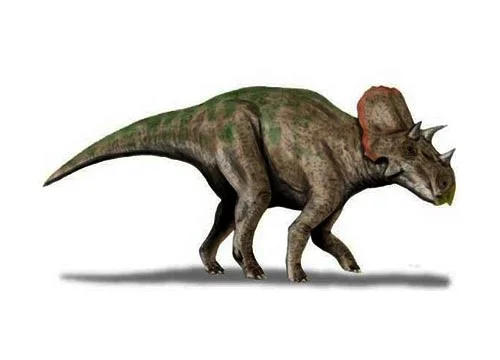Brachyceratops (Short horned face)

Brak-e-seh-rah-tops
Charles Whitney Gilmore - 1914
Herbivore
Estimated 6-7 meters long
Ceratopsian
B. montanensis (type)
USA, Montana - Two Medicine Formation
Late Cretaceous, 76-74 million years ago
Brachyceratops Facts
Brachyceratops, whose name means “short horned face,” was a herbivorous dinosaur that was first discovered in the Judith River Formation of Montana, United States. This dinosaur is believed to have lived approximately 76-74 million years ago.
Brachyceratops was a ceratopsid, a group of dinosaurs known for their elaborate frills and horns, and was a smaller cousin of other well-known ceratopsids such as Triceratops. Brachyceratops was about 6-7 meters long and weighed around 2.5-3 tons.
One of the most notable features of Brachyceratops was its frill, which was much smaller in size compared to other ceratopsids, hence its name “short horned face.” The frill was made up of bony plates and was thought to have served several functions, such as protection, display, and regulation of body temperature.
In addition to its frill, Brachyceratops also had a pair of small horns above its eyes and a larger, curved horn on its nose. These horns were most likely used for display and potentially for defense.
Brachyceratops lived in the forested areas of what is now North America and had a diet that consisted mainly of low-lying vegetation, such as ferns and cycads.
Despite being a relatively small ceratopsid, Brachyceratops was a successful dinosaur and its fossils have been found in several locations across North America. This dinosaur provides important insights into the evolution and diversity of the ceratopsid group and contributes to our understanding of life during the Late Cretaceous period.
In conclusion, Brachyceratops is a fascinating dinosaur that lived during the Late Cretaceous period and is well-known for its small frill and horns. As a paleontologist, it’s always exciting to learn about these ancient creatures and to imagine what the world was like during their time.



